Legend of Zelda: A Link Between Worlds – Preview
by Edward
|
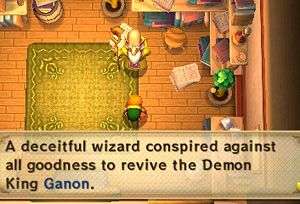 With by far the most consistently-amazing titles, almost every Zelda title released ends up in one poll or another being one of the greatest games of the year, if not of all time. Although Ocarina of Time is often considered one of the greatest games ever – and, in my opinion, it is -so is its SNES predecessor A Link To The Past, and while the former has seen almost all subsequent titles follow on from its storyline in some way, the same can’t be said for the latter. However, this year sees the release of a follow-up to the Super Nintendo classic, with A Link Between Worlds taking players back to A Link To The Past’s version of Hyrule, only a generation after Agahnim and Ganon’s defeat.
With by far the most consistently-amazing titles, almost every Zelda title released ends up in one poll or another being one of the greatest games of the year, if not of all time. Although Ocarina of Time is often considered one of the greatest games ever – and, in my opinion, it is -so is its SNES predecessor A Link To The Past, and while the former has seen almost all subsequent titles follow on from its storyline in some way, the same can’t be said for the latter. However, this year sees the release of a follow-up to the Super Nintendo classic, with A Link Between Worlds taking players back to A Link To The Past’s version of Hyrule, only a generation after Agahnim and Ganon’s defeat.
The demo was split into two parts – the over-world and a dungeon – to allow players to get to grips with the upcoming classic a little more thoroughly, although anyone exploring the land of Hyrule could make their way to the second part of the demo themselves whenever they wanted. Opting to take the scenic route to the dungeon, I did my best to soak up the familiar environments; anyone with fond memories of A Link to The Past will be filling to the brim with nostalgia every few screens, as for all intents and purposes it’s almost exactly the same layout as before, but with some minor differences to accommodate for the hand-held, graphical style – a sleek combination of the top-down style mixed with the Zelda cartoon and the drawings from the first Zelda manual – and Link’s new-found ability to turn into a wall painting.

Where many of the differences instead lie is in the control scheme; A Link Between Worlds adds a dedicated shield button and two item slots as well as your sword – occupied by the bow and a hammer throughout the demo – and removes a map button by having it present on the touch-screen instead. Traversal through Hyrule is also more precise as Link is now able to move more freely thanks to the analogue nub, with his pace feeling a lot faster than it did in the SNES predecessor as a result. The caveat to this is that those used to playing some of the more recent Zelda titles will feel the loss of the roll command, and there were several moments where I found myself experimenting to see if there was a way to make Link do so, although luckily I managed to work it out of my system by the time I arrived at the dungeon.
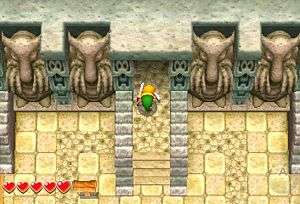 A common complaint of the Zelda franchise is that after a while the same puzzles tend to crop up, with the most common being “move some blocks around” and “kill everything in this room before you can move on”, and while I didn’t find myself having to do the former, the latter did admittedly come up just once throughout the demo, but its presence was completely overshadowed by the variety of other puzzles on display. One of these – and a vital part of exploring – involved whack-a-mole- style mushroom heads that needed to be flattened with the hammer, although after a few seconds they’d rise back up, giving the player a small window in which to move past them.
A common complaint of the Zelda franchise is that after a while the same puzzles tend to crop up, with the most common being “move some blocks around” and “kill everything in this room before you can move on”, and while I didn’t find myself having to do the former, the latter did admittedly come up just once throughout the demo, but its presence was completely overshadowed by the variety of other puzzles on display. One of these – and a vital part of exploring – involved whack-a-mole- style mushroom heads that needed to be flattened with the hammer, although after a few seconds they’d rise back up, giving the player a small window in which to move past them.
The puzzle aspect of this comes from the fact that by standing on top of the depressed head and waiting for it to spring back up, Link can be launched to floors situated higher up, but not every head will launch you to where you need to go, and may instead chuck you back to the ground floor.
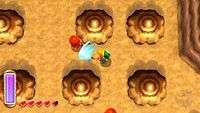 |
 |
 |
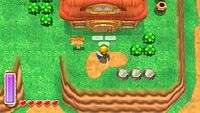 |
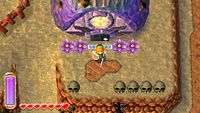 |
 |
The other major set of puzzles – and indeed the central narrative conceit of A Link Between Worlds – is that at any point Link can transpose himself onto the nearest wall, taking the form of a chalk drawing and gaining the ability to move across to areas that would be impossible to access otherwise. With this simple addition exploration is flipped on its head, as you always have to be acutely aware of the layout of each room and floor in case you’re called upon to travel across the rooms to proceed.
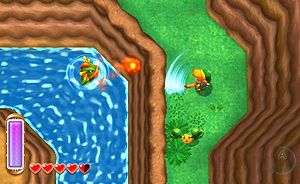 The most ingenious use of this mechanic was when it was used in tandem with other puzzles; one such situation involved having to trigger red and blue walls appearing by hitting a switch, with progression requiring knowing when to swap between the colours and when to use them to travel to another area. Another great example required the player to move across the walls between floating platforms, which would also pass under blocks that Link could move on to and around before landing on the platform safely again, having to time when they depressed a mushroom head so they could leap to a higher platform.
The most ingenious use of this mechanic was when it was used in tandem with other puzzles; one such situation involved having to trigger red and blue walls appearing by hitting a switch, with progression requiring knowing when to swap between the colours and when to use them to travel to another area. Another great example required the player to move across the walls between floating platforms, which would also pass under blocks that Link could move on to and around before landing on the platform safely again, having to time when they depressed a mushroom head so they could leap to a higher platform.
Becoming a pattern on the wall isn’t something that the player should take for granted as, while it was a vital method to complete the dungeon, its use – as is the amount of arrows you can fire from your bow – is limited by the magic meter. Thankfully, this replenishes naturally, meaning that if you make a mistake you’re not punished for your inability to find a potion. While your magic will regenerate, your health won’t and can only be filled up again – as it always has – by collecting hearts, fairies and the heart pieces scattered about the over-world, although I didn’t test on how viable a tactic it was to repeatedly morph onto the wall to avoid taking damage.
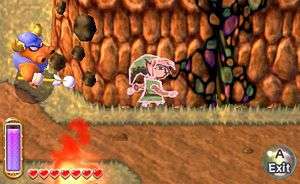 While approaching the ability to turn into a chalk painting at will with a little scepticism, I came out of my time with the demo absolutely relishing the prospect of what it could bring to the Zelda formula. It may appear as though it’s relying on nostalgia towards A Link To The Past, but it felt and played remarkably differently to its predecessor, with the greatest similarity between them being that it takes place in the same version of Hyrule. I loved my time with A Link Between Worlds, and if Nintendo continue to put their all into it, then there’s no reason it couldn’t be the best portable Zelda yet.
While approaching the ability to turn into a chalk painting at will with a little scepticism, I came out of my time with the demo absolutely relishing the prospect of what it could bring to the Zelda formula. It may appear as though it’s relying on nostalgia towards A Link To The Past, but it felt and played remarkably differently to its predecessor, with the greatest similarity between them being that it takes place in the same version of Hyrule. I loved my time with A Link Between Worlds, and if Nintendo continue to put their all into it, then there’s no reason it couldn’t be the best portable Zelda yet.
Last five articles by Edward
- Best of 2015: Journey's End: A New Beginning
- Journey's End: A New Beginning
- You Can't Choose Your Happy Ending
- Okay, Let's Fix Comedy In Games - The V-Effekt
- Time Keeps On Smashing Away
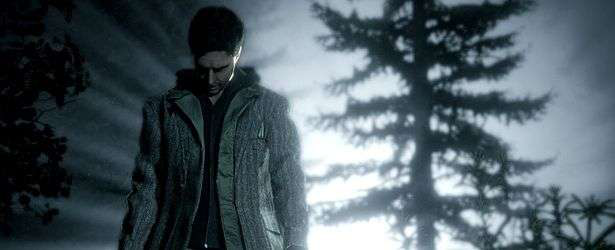

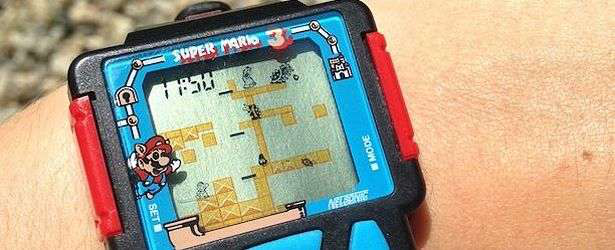



















As someone who, rather shamefully has never really played a Zelda title (aside form a brief dabble with Oracle of Ages), how accessible is it for someone like me? Does it assume a knowledge of the rather busy Zelda lore, or can I leap straight in with this one and still enjoy it?
I LOVE how this one looks. It may well be the game that actually makes me dust off the 3DS.
There wasn’t any story on display from what I played, but every Zelda title has its own distinct story that essentially assumes you haven’t played any of the previous titles (except Oracle of Ages and Seasons, which tie directly into each other and are available now on the 3DS eShop!) and will only mention them in cursory glances, as they tend to take place hundreds of years after each other. So it’s often the case that they’ll refer to a previous event in the lore, but it’s always wildly interpretable what specific event they’re talking about to the point where until the Hyrule Historia came out and actually told people what the timeline was people had no idea where each one in the series was placed.
As it’s a sequel to A Link to the Past, I imagine there’ll be some mentions and nods to A Link to the Past, but I doubt it’ll force you to know the plot seeing as the original release was about 20 years ago and the GBA re-release was a good 10 years ago too
As for the gameplay, it didn’t really assume I knew a lot about previous Zeldas, but that’s mostly because the puzzle designs were for the most part unlike the rest of the series.
TL;DR you should be able to jump straight in and enjoy the ever-loving Link out of it.